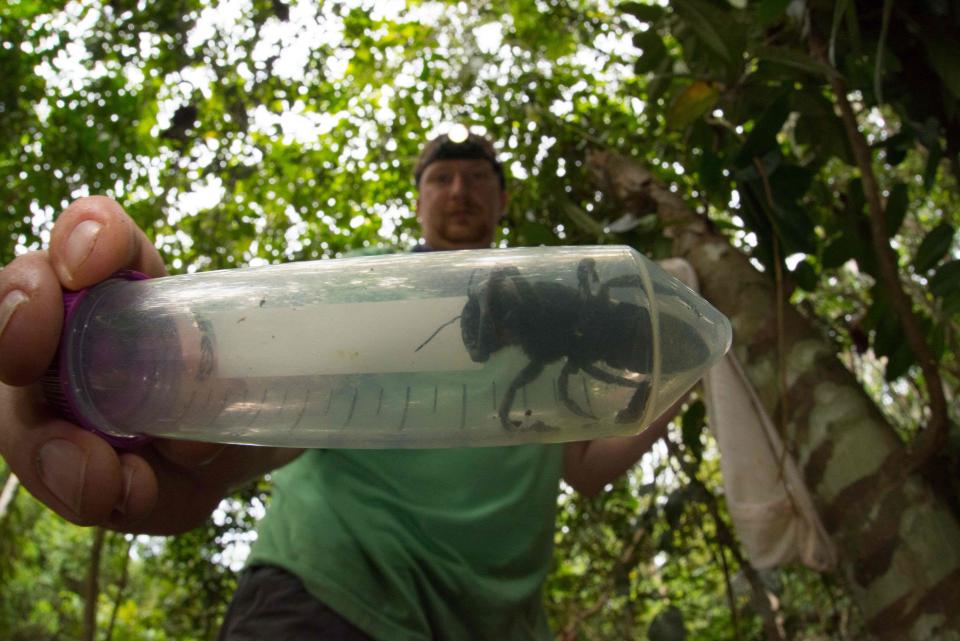Can you bee-lieve it? World's largest bee discovered in Indonesia after 38 years
The world's largest documented bee was missing for nearly four decades, until a team of researchers rediscovered the insect last month in Indonesia.
Wallace’s giant bee – or Megachile pluto – is as long as a human thumb with a wing span of two and a half inches. It is also nearly four times the size of a European honey bee, according to Global Wildlife Conservation.
And on January 25, the bee was officially sighted for the first time in 38 years in the North Moluccas, a group of islands in eastern Indonesia.
"I almost wondered if I was imagining it," Clay Bolt said, a natural history and conservation photographer who was with the team that traveled to Indonesia looking for the bug. "We had almost given up hope that we were going to find it, so when it was looking back at me from the nest it was almost surreal."
Bolt was a member of an eight-person team, made up of researchers from Australia and North America and local Indonesian guides, that began looking for the bee in January. Bolt said the researchers, especially Eli Wyman of Princeton University, had been "dreaming" of finding the bee in the wild for years.
Wallace's giant bee was first discovered by British naturalist Alfred Russel Wallace in 1858, but the last time it was observed was in 1981 by entomologist Adam Messer.
So, after fellow Canadian researcher Glen Chilton and Australian researcher Simon Robson approached Wyman and Bolt in October 2018 about a trip they were planning to search for the bee, the researchers booked their tickets in hopes of learning more.
The insect had long been thought of as a "lost species," according to Bolt, and their team wanted to raise worldwide awareness to potentially protect the bee, especially through sharing images of it.
"I know the power that a photo can convey in terms of convincing people to care about something," Bolt said. "We have specimens, but it's difficult when we can't show the bee alive. It can really capture people's imagination."

In January, the team spent weeks looking in termite mounds, where the bee naturally nests. On the last day of a five-day trip to one site in the North Moluccas – at a spot which researchers are keeping private to protect the bee – a guide, Iswan, pointed out a termite mound nearly eight feet off the ground.
The team almost didn't check the nest because they were tired and hungry in the Indonesian heat, according to Bolt's published account of the trip. But, after looking and feeling inside the nest, they used headlamps to ultimately discover a Wallace's giant bee.
"It was a moment of triumph," Bolt said. "It was incredible just because of it's sheer size."
Bolt said he knew the team's efforts to protect the bug had just started, but it was still an an optimistic moment for biologists and bee lovers everywhere.
"It was a moment of like 'Okay, now we have work to do," Bolt said. "It's a very scary and very difficult time, but for me this says hope is still out there and all is not lost. It gives me hope that we can still save some of these species and make a difference."
This article originally appeared on USA TODAY: Can you bee-lieve it? World's largest bee discovered in Indonesia after 38 years


